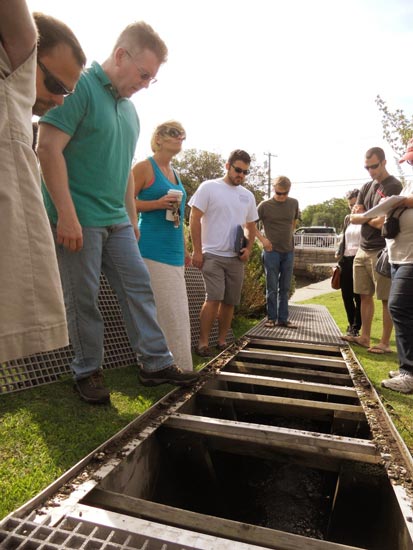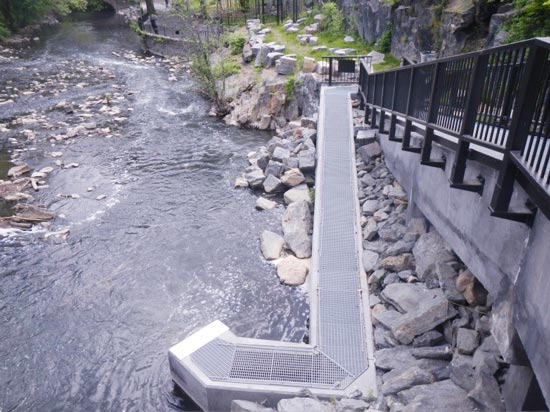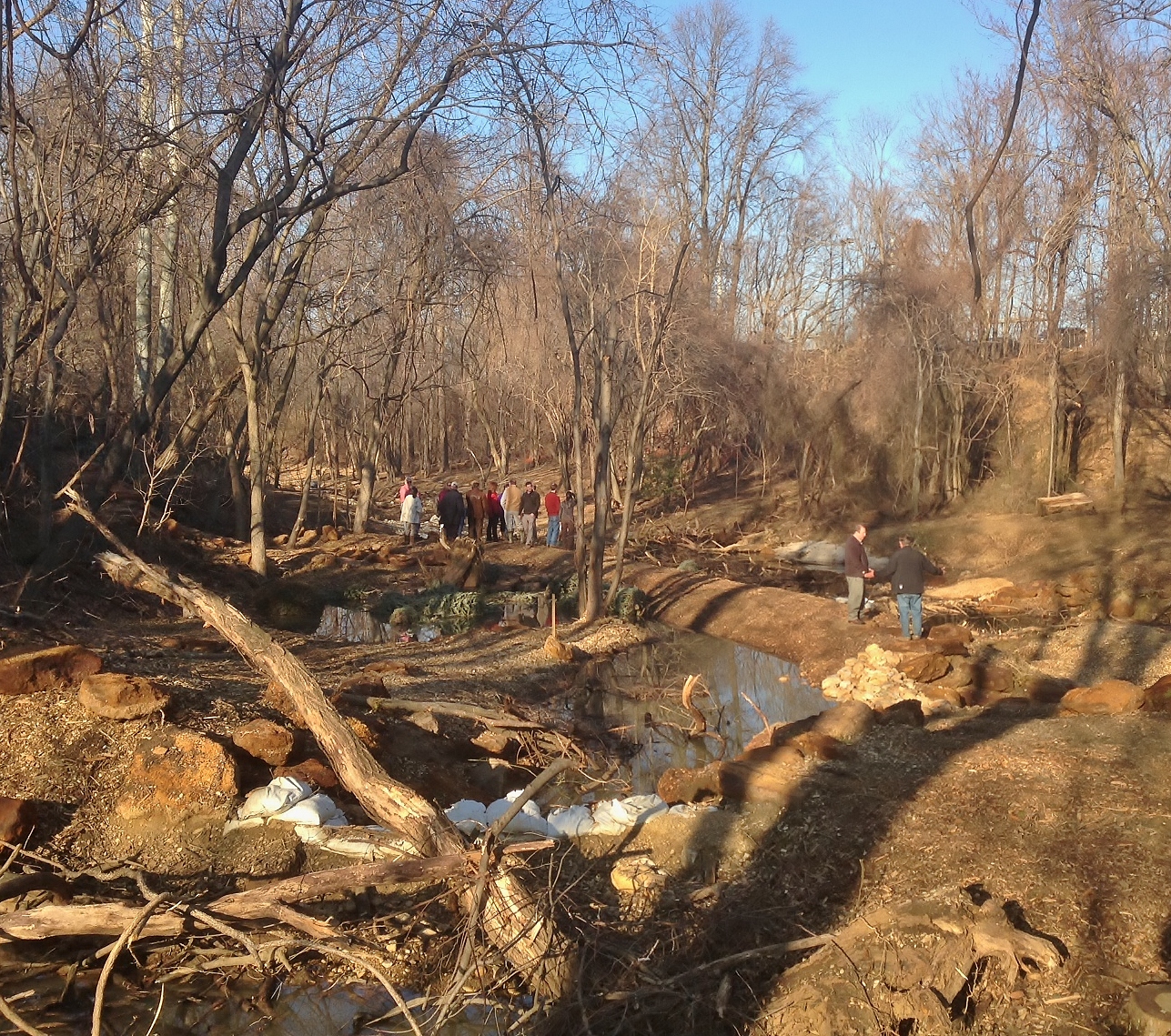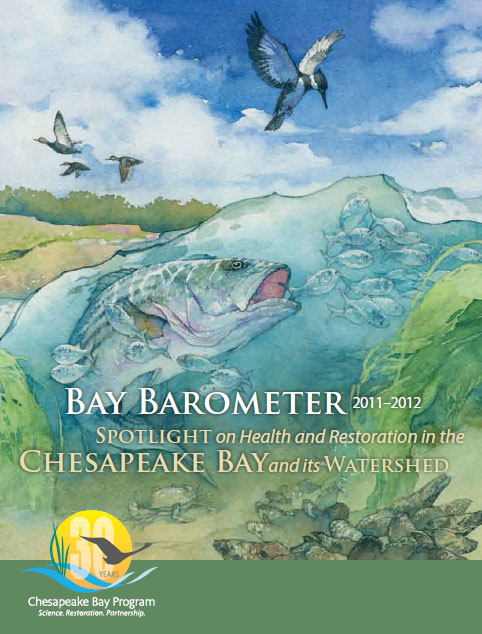Bridge soars over restored Maine river
By Amy Miller
I was driving south on Maine’s coast checking out Down East’s picturesque seaside towns when a bridge appeared through the fog, quite like Oz on the horizon. This was not the covered bridge of a quaint New England town, nor the familiar antiquated railroad bridge. This was a looming modern

The observatory of the Penobscott Narrows Bridge can be reached through the Fort Knox Historic Site.
structure more reminiscent of the Zakim Bridge into Boston. The closer we got the more I wondered at the size and stark beauty of this structure.
As it turns out, my husband and I were heading toward the 2,120-foot long Penobscot Narrows Bridge, and for good reason it conjured the Zakim. This 10-year-old bridge is one of only three of its kind in the world: constructed with a cradle system that carries the strands within the stays from bridge deck to bridge deck. The other two bridges of this kind are the Zakim and the Veterans’ Glass City Skyway in Toledo, Ohio.
Towering 420 feet over the town of Bucksport, the bridge’s public observation tower is also the only public bridge observatory in the country and one of four in the world (the others are in China, Slovakia and Thailand). The tallest of the four, it is reached by the fastest elevator in northern New England and gives you 360-degree views of Maine’s coastline, islands and lots of hills and mountains.
But just as impressive as these views is the far less visible but no less superlative accomplishments flowing below the span. The 109-mile Penobscot River tells the story of America’s environmental tragedies, as well as the equally compelling stories of how health and beauty can be restored to our waterways.
The restoration of the Penobscot involved an unprecedented effort to remove two dams and build a state-of-the-art fish bypass around a third. In addition to the Howland Dam bypass, the Milford Dam has a state-of-the-art fish lift installed as part of the restoration project.
As a result, hundreds of miles of habitat along the Penobscot and its tributaries have been restored, opening the way for sea-run fish, helping the ecology as well as the communities along the river.
In 1999 when Pennsylvania Power and Light purchased a series of dams in Maine, the company approached the Penobscot Indian Nation and several conservation organizations with the idea of working together to relicense the dams. Four years later the company announced it would remove dams along the lower part of the river while keeping hydropower upriver.
The non-profit Penobscot River Restoration Trust was formed, including the Penobscot Indian Nation and six environmental groups — American Rivers, Atlantic Salmon Federation, Maine Audubon, Natural Resources Council of Maine, The Nature Conservancy and Trout Unlimited, who worked with a variety of state and federal agencies, including EPA, on the restoration project.
The Trust in 2010 purchased the Veazie, Great Works, and Howland dams. The first two were removed and a bypass was created around the Howland Dam in 2015 marking the end of this model restoration program.
Before the 1830s, there were no dams on the Penobscot and Atlantic salmon ran upstream in schools numbering 50,000 or more. Shad and alewives migrated 100 miles upriver. Twenty-pound striped bass and Atlantic sturgeon also swam into the river.
Since the restoration, fish have retraced those routes. The salmon run today is considerably smaller than it had been, but still qualifies as the country’s largest Atlantic salmon run. And the population is likely to grow. As this happens, other wildlife that feeds on migrating fish will also do better.
When the restoration is over, 11 species of sea-run fish will have renewed access to habitat that runs from Maine’s high point on Katahdin down to the bay near the Penobscot Narrows Bridge, though not all the species may make it to Katahdin.
The Penobscot Indians fished for American shad as long as 8,000 years ago and sturgeon 3,000 years ago. The logging, dams, and industry along the river put thousands of years of activity to a stop by the 1950s.
Only a generation ago this river was regarded as one of American’s most endangered. It is now considered one of America’s most significant river-restoration efforts.
As you stand in the observatory, turning to look out in 360 degrees, remember to look down at the Penobscot. Sometimes the biggest changes lurk beneath the surface.
http://www.penobscotriver.org/
Amy Miller is in the public affairs office of EPA’s New England office.

















